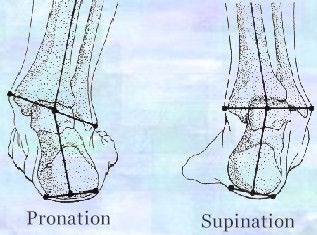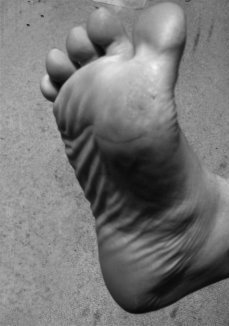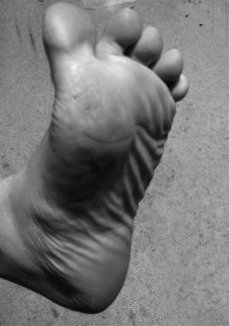|
Do your feet hurt??
I hear it a lot, "My feet hurt when I skate" or a lot of skaters experience cramping
in their arches. Not every skate will fit your foot exactly, because everybody's feet are a little different. When your
feet hurt, you don't want to skate but there are some things you can
do to help alleviate foot pain, blisters or cramping.
Are You Tense?
The first thing to take notice of is your skating. When you are in
your skates, are you tense or nervous? Do you have your toes curled up tight
like you are trying to hold on? Every once in awhile when you are
stopped, take a deep slow breath, relax and step onto the grass or another soft surface,
uncurl your toes, and wriggle them. When your toes are curled up, your
foot is arched and that can cause your foot to cramp while you're skating.
Do Your Skates Fit?
Are your toes curled up because your skates are too big? Are you
trying to grip the inside of your skates with your toes to keep from sliding
around? If your foot is moving back to front or side to side, you are
probably trying to keep steady by gripping your toes. You need to look
into getting a better fitting skate. It might be that you just need
thicker socks to take up some room.
Maybe Your skates are too small? If you have wide feet, and you feel the boot
closing in on you mid foot while you are skating? Trying going up a
half size and filling the toe space to avoided foot movement. Or if you are
a woman, try skating in a Men's skate, they tend to run wider. If your compensating for a wide
foot, by selecting a longer boot, then you need to fill the toe gap firmly
with something so your foot doesn't keep sliding forward.
|
|
Foot Beds
You can replace the existing foot beds that came with your skates.
They are usually not that supportive and can cause cramping if your arch
isn't properly supported. Do you wear an orthotic? Slip it into
your skate. Or you can go to the drug store and purchase some arch
supportive insoles.
Instead of full arch supports, try silicon heel supports (heel cups) alone.
These are typically used for heel pain, but in some people they help with
mid foot discomfort. You can also have custom moldable insoles made for
your feet. Local ski
shops are a great resource to find help with your foot cramping issues.
Do You Have Blisters?
If you are getting blisters, pull your lining out and clean it, make sure it
is positioned properly in the shell of the skate. Check the seams to
see that they are not bunched or twisted wrong in the boot. Check your socks
to be sure you are wearing ones that don't absorb moisture.
|
|
Do You Have High Performance
Skates?
Sometimes those high performance skates, with the light frames tend to
transfer road vibrations directly into the feet, causing foot pain and
fatigue. You can add a gel arch support to help absorb the vibration
transfer.
Instead of full arch supports, try silicon heel supports (heel cups) alone.
These are typically used for heel pain, but in some people they help with
mid foot discomfort.
Sometimes seeing a specialist is a good idea. A podiatrist can help
diagnose more difficult foot pain issues, related to your stance or other
variables. Pronation, or supination, if extreme can also cause foot
pain when skating.
|
|
|
*Pronation:
In simple term, pronation
is the flattening out of the arch when the foot strikes
the ground. Normally, the foot will pronate to absorb
shock when the heel hits the ground, and to assist in
balance during mid-stance. The ankle will 'tip' towards
the inside.
Excessive pronation can be
problematic because the shifting causes increased stress
on the inside/ medial aspect of the foot. It pulls on
the stabilizing muscles in the lower leg (posterior
tibialis) and often causes the knee to shift to the
inside. The excessive stress on the
The body can overcompensate
for this pronation and shift the ankle towards the
outside causing the ankle to roll over
|

Note: Every body pronates and supinates
It is the body's way to absorb shock
and allow the foot to work as a lever. Excessive motion
in either direction can be very problematic if not
controlled.
STEENWYK
Custom Shoes and Orthotics |
*Supination:
Supination is the opposite
motion of pronation. A foot is in supination when the
ankle appears to be 'tipped' to the outside so you are
standing on the outside border of the foot. Supination
allows the foot to be a more stable, rigid structure for
when we push off on our next step. The foot naturally
supinates during the toe-off stage (when the heel first
lift off the ground until the end of the step) to
provide more leverage and to help ‘roll’ off the toes.
Excessive supination
predisposes the ankle to injury because the stabilizing
muscles on the outside of the lower leg (peroneals) are
in a stretched position. It does in not take much force
to cause the ankle to roll over, potentially causing
ligament damage.
|
|
|



